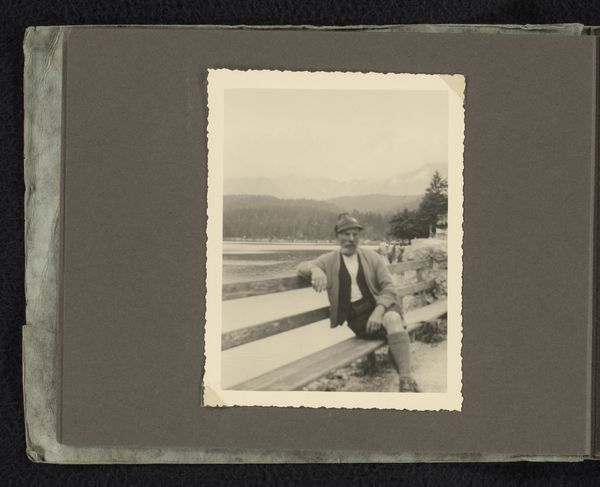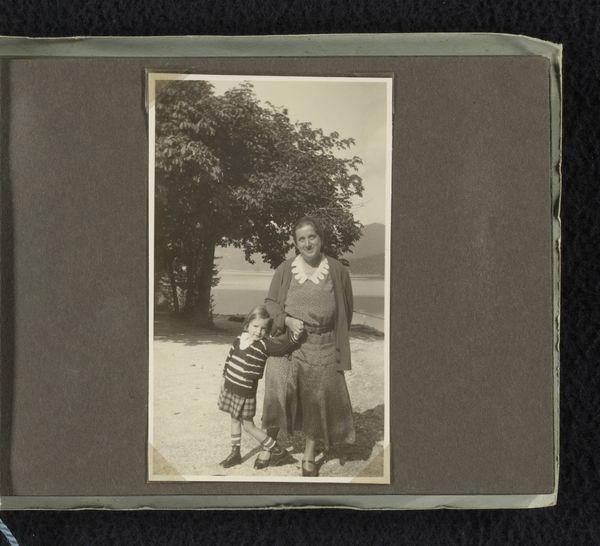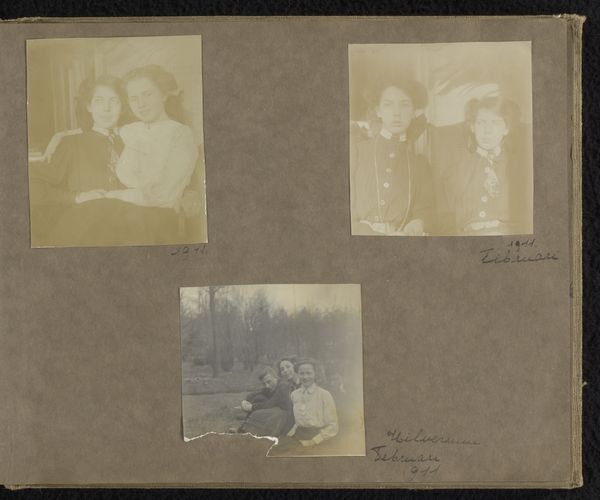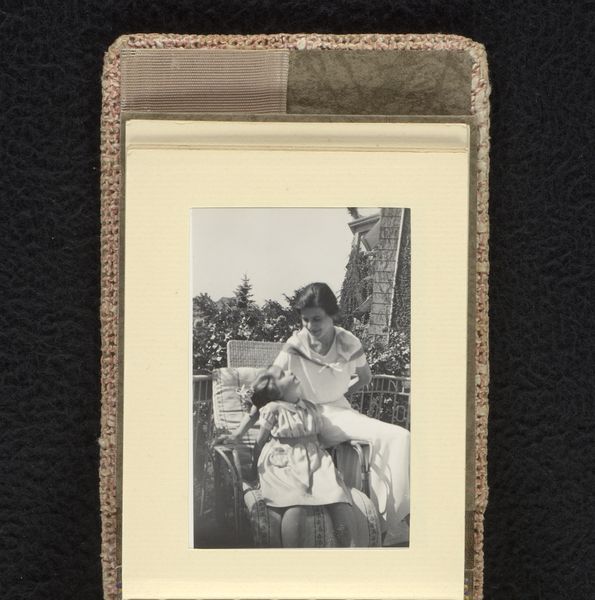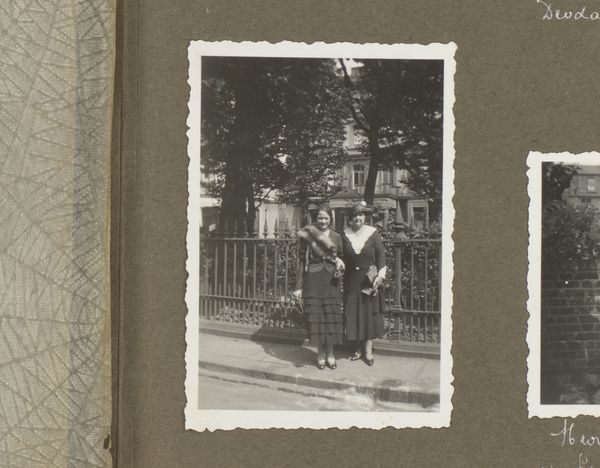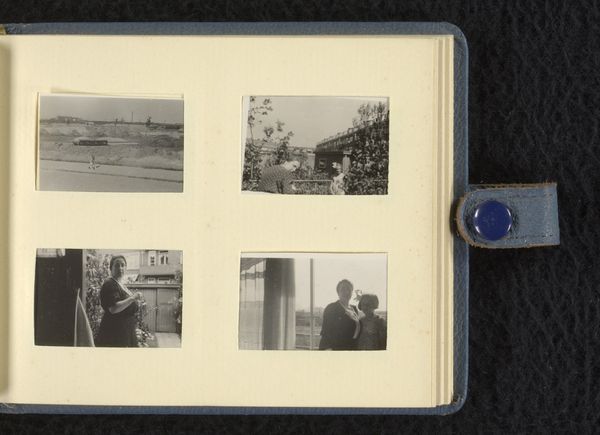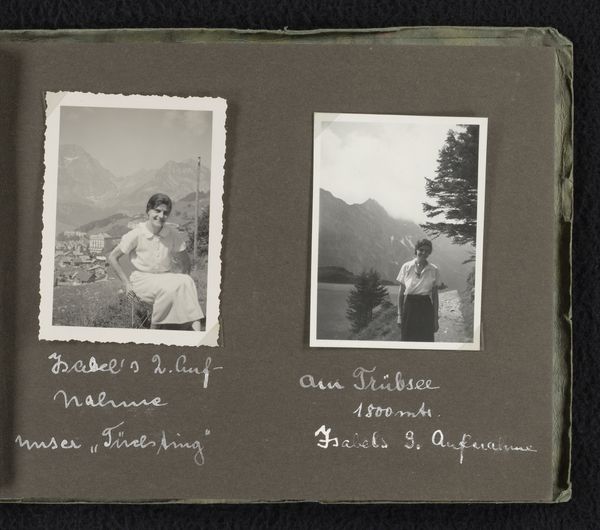
Else Wachenheimer-Moos en onbekende vrouw op het balkon van een hotel, augustus 1932, Eibsee (Beieren) 1932 - 1938
0:00
0:00
photography, gelatin-silver-print
#
photography
#
gelatin-silver-print
#
genre-painting
Dimensions: height 105 mm, width 135 mm, height 165 mm, width 235 mm
Copyright: Rijks Museum: Open Domain
Editor: This gelatin-silver print titled "Else Wachenheimer-Moos and an unknown woman on the balcony of a hotel, August 1932, Eibsee (Bavaria)" shows two women posing together. There’s an almost casualness about it, a real slice of life. How do we understand this sort of informal snapshot in its time? Curator: It’s tempting to view this as just a personal memento, a record of a summer holiday, but photographs like this were profoundly shaped by the rising tide of socio-political anxieties in 1930s Germany. Consider the family’s history - labelled "familie Wachenheimer". What does it mean to document a life so closely at this moment? Editor: Are you suggesting the very act of documentation became a form of resistance or preservation? Curator: Precisely! Photography offered a way to capture and solidify personal narratives against the backdrop of increasing state control and persecution. It becomes a tool to say "we were here," "this was our life," in the face of a regime aiming to erase their existence. The Eibsee location becomes meaningful, too—a temporary escape, perhaps, yet still framed by the ever-present context. Editor: So, what seemed like a simple snapshot becomes a powerful act of bearing witness. Knowing the family’s story certainly shifts how I see it. Curator: It’s a reminder that even seemingly innocuous images can be deeply imbued with historical weight and speak volumes about the public role of art and image-making in the face of adversity. I now wonder who preserved the image and if the Wachenheimer family was aware that it was a witness for their future existence. Editor: I'll never look at old family photos the same way again.
Comments
No comments
Be the first to comment and join the conversation on the ultimate creative platform.

